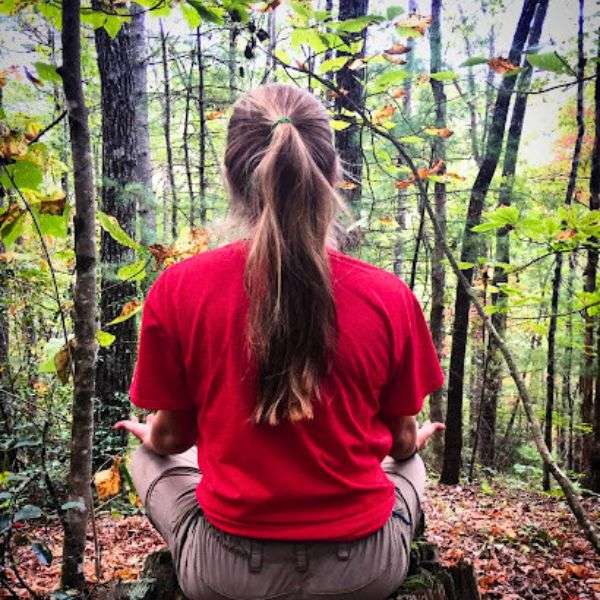Although you’ve probably heard that mindfulness is currently a therapeutic “buzz word”, it is truly a practice that has been around for thousands of years. It has its roots in both Hindu and Buddhist traditions, but also in Judaism, Christianity and Islam. In addition to it being rooted in these religious traditions, it also has been embraced and popularized by secular institutions.
Misconceptions about mindfulness
There are many common misconceptions about mindfulness. Mindfulness is often mistaken for a specific religious practice. Although many religions embrace practices of mindfulness, it is a practice that can be incorporated into any religious belief system, and also can be practiced by non-believers.
Mindfulness is also often mistaken for relaxation. Although relaxation can sometimes be the result of mindfulness, it is not the goal of the practice. If we are practicing mindfulness authentically, the result can actually be feeling more agitation!
People also often mistake being mindful with having an empty mind. What a nearly impossible practice to aspire to! How many people can say that they have actually had the experience of a completely empty mind for more than a few seconds? Being mindful is certainly not having a completely quiet, empty mind…although expert practitioners of mindfulness may have the ability to reach this state in their practices. However, it is not the immediate goal of mindfulness.
Many people also believe that they don’t have the capacity to practice mindfulness. This is oftentimes because our conception of the “empty mind” is the frame from which our belief about mindfulness operates. We believe that being mindful means the ability to focus our attention for inordinate amounts of time, or to meditate, or to continually be mindful. The good news is that everyone can practice mindfulness. If you can breathe, you can practice mindfulness!
So, what is mindfulness then?
There are three basic principles of mindfulness: being present, being aware, and being non-judgmental.
Presence
Being present is the idea of being in the here and now. As humans, we have the ability to transcend space and time through the power of our minds. Right now, if I asked you to think of a memory from earlier this morning, you would be able to pinpoint a specific experience, a particular moment in time. We often spend most of the day in this state: either thinking about the past, or the future. When we spend time thinking about the past, we can often increase our experience with depression—feeling regretful or feeling nostalgic. When we spend too much time thinking about the future, this can increase our sense of anxiety—feeling stressed, overwhelmed or worried. Being present is being in the moment of here and now—and living in that moment, awakening to our current experience, rather than what has/hasn’t happened or what might/might not happen.
Awareness
Being aware takes the idea of being present and expanding this to notice and observe what is happening in the moment. Awareness is observing ourselves, our experiences and our surroundings. If you drive, do you remember when you were learning how to drive a car? You were probably acutely aware of checking your side and rearview mirrors, using your turn signals, paying attention to the traffic around you. Awareness in mindfulness is just that—paying attention to your experience. Now that I’m an experienced driver, I know I’m guilty of not being as aware of my driving and my surroundings as I was when I was first learning. It’s easy to go on auto-pilot while I’m driving and plan my schedule for the day, do phone calls (hands-free!), and what not. Being aware allows us to embody whatever it is we are doing in that moment. Drinking tea? Really drink it, taste it, notice the temperature, the sensation of the cup to our lips.
Non-judgment
Being non-judgmental, although fairly self-explanatory, is for me, the most difficult aspect of mindfulness. It is the idea of suspending judgment; that things are neither bad nor good, neither positive nor negative, they just are. So, in practicing mindfulness, we may do a mindful body scan, and during the body scan notice that we have tightness in a particular part of the body. Non-judgment is noticing this tightness and not associating any verdict with this, the idea of: it is what it is. In DBT (Dialectical Behavior Therapy) this idea is demonstrated through the idea of radical acceptance—accepting that reality is what it is. So, in the practice of mindfulness, non-judgment could look like doing the above-mentioned body scan (presence), noticing the tightness (awareness), and simply accepting that particular muscles are tight—like a scientist doing an experiment and taking note of the results, “noted: muscles are tight” instead of, “it’s so great I worked out and so my muscles are sore” or conversely, “my muscles are so sore, it’s going to be a terrible day!”
There is an old fable I share with my students when teaching the concept of mindfulness. I read the story years ago and have probably botched the telling of it (judgment!), but nonetheless, the lesson is the same. It is the story of a Zen farmer whose farm is stampeded by wild horses. The neighbor sees what happened and says to the farmer, “Oh no! This is terrible!” to which the farmer replies, “Maybe, maybe not.” The farmer’s son then tames the wild horses and uses them to restore the farm. The neighbor sees this and says, “Oh, this is wonderful!” to which the farmer replies, “Maybe, maybe not.” While the son is using the horses to plow the land, he falls off one of the horses and breaks his leg. The neighbor exclaims, “This is terrible!” and the farmer again replies, “Maybe, maybe not.” Then, a war breaks out in the country, all young men are asked to fight, but death is inevitable. Because the son’s leg is broken, he can’t go to war. The neighbor says to the farmer, “Well, this is wonderful news!” to which the farmer again replies, “Maybe, maybe not.” And so, the story could continue. The farmer practiced the art of mindfulness—being present to his experiences, being aware of his experiences, and suspending judgment about whether they were good or bad.
The practice of mindfulness allows us to live in the moment, and awaken to the experience, while at the same time not over-identifying with the experience we are having. Like clouds in the sky, we know they come and go, what remains constant is the sky—regardless of the weather patterns. Mindfulness is noticing the “weather”; the thoughts, feelings, body sensations and external experiences we are having.

